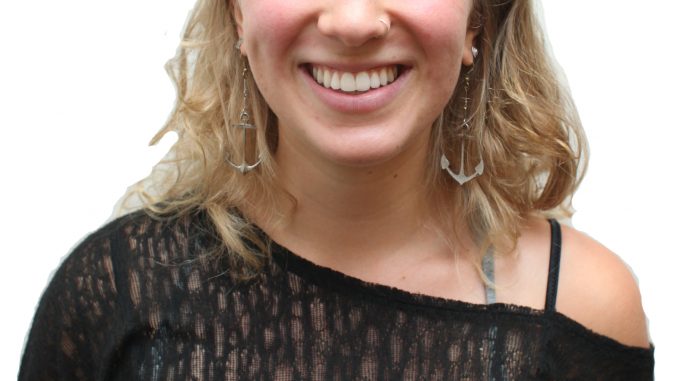
 The week before last, I gave you a look behind the scenes about what it took for Temple’s chapter of Invisible Children to pull together a nine-day exhibition at the Arts Garage. This week, I got the opportunity to participate in the “Activism Through Art” showcase and see the result of months of hard work first hand.
The week before last, I gave you a look behind the scenes about what it took for Temple’s chapter of Invisible Children to pull together a nine-day exhibition at the Arts Garage. This week, I got the opportunity to participate in the “Activism Through Art” showcase and see the result of months of hard work first hand.
The event I attended was the poetry showcase Monday, Oct. 8, co-hosted by Hyphen, Temple’s literary arts magazine, and featuring Babel, Temple’s performance poetry collective. I would have attended even if I wasn’t a Babel member, but the convenience of the overlap can’t be denied. The obligation also encouraged me to tackle the daunting task of leaving my house after suffering a long cold bike ride from South Philly earlier that day. Despite a day of freezing, windy, generally nasty weather, the evening air was surprisingly mild and still and made for a pleasant commute.
Nicole Counts, the co-artistic director of the exhibition whom you may remember from my interview two weeks ago, said that she thought the unfortunate weather had decreased attendance. I, on the other hand, consider drawing a crowd of around 20 people to hear poetry on a Monday night, when there were eight other days of events to choose from, to be a rousing success.
The poetry event itself began at approximately 7:30 p.m. and lasted about 40 minutes, with few enough participants to allow each one to present multiple poems if they chose to but with a sufficient number to make for a diverse listening experience. Hyphen focuses on written word while Babel is geared toward spoken word, so the juxtaposition of styles was refreshing and unique. I’m accustomed to slam performance poetry competitions, where there are strict time limits, typically large crowds and multiple rounds that can last for several hours. The opportunity to come together in a relaxed, intimate setting to indulge in art — and still have time to do something afterward — was a breath of fresh air.
The Arts Garage is mostly exposed brick, which I have a romantic soft spot for — even though it usually accompanies rooms that run cold, and I’m prone to losing circulation in my extremities. Though it was admittedly a little drafty, I was happy to sacrifice some body warmth for how inviting the space felt.
Invisible Children had reserved the entire second floor, complete with a stage for live events, a bar area and a back room for the actual art exhibition. The stage spans the width of the room and extends all the way to the back wall, where there is a small window with a beautiful south-facing view of the Philadelphia skyline. The image of twinkling buildings jutting into a dark sky — and a wall of that exposed brick — provided the most appropriate backdrop to a poetry reading I’ve ever encountered. I know I tend to get a little “meta,” but I honestly felt like I was in a movie, playing a college poet living in a city. And, it was awesome.
The actual exhibition was contained in the back room, and each wall featured a diverse range of mediums and messages. I was surprised and impressed to see a variety not only of styles — there were photographs, collages, graphic prints and paintings — but also subjects, ranging from local to international issues. I am very glad that the event was free, as all the work was available for sale and I couldn’t resist the opportunity to invest in a few pieces for my growing art collection. Several other works would have come home with me — including an $80 illustration for a children’s book that featured a Tim Burton-style character looking out a window at an upside down skyline, representing doom and uncertainty, but alas, the college budget prevented it.
A fifth wall in the hallway that connected the exhibit to the main space served as the anchor for community interaction. A huge brown piece of paper invited visitors to answer the question: “What does activism mean to you?” Answers varied from serious to silly to responses that had clearly been pulled from a Merriam-Webster dictionary iPhone app, but reflected a level of community involvement that even high-end museums now strive for. I’ve seen similar displays at the Franklin Institute and the National Museum of American Jewish History, as well as many art museums throughout the country.
I am currently enrolled in a seminar entitled “Introduction to Community Arts,” where we investigate practices of community engagement and evaluate the importance not only of producing work, but also of facilitating space for conversation where communities can be built and flourish. To me, the simple brown paper exemplified the community engagement that Counts and her Invisible Children team strived for with the exhibit. And, the answers that littered the page represented a great success. The exhibition had started a conversation and lit the spark of awareness that is crucial to ignite activism and make changes.
Victoria Marchiony can be reached at vmarchiony@temple.edu.



Be the first to comment